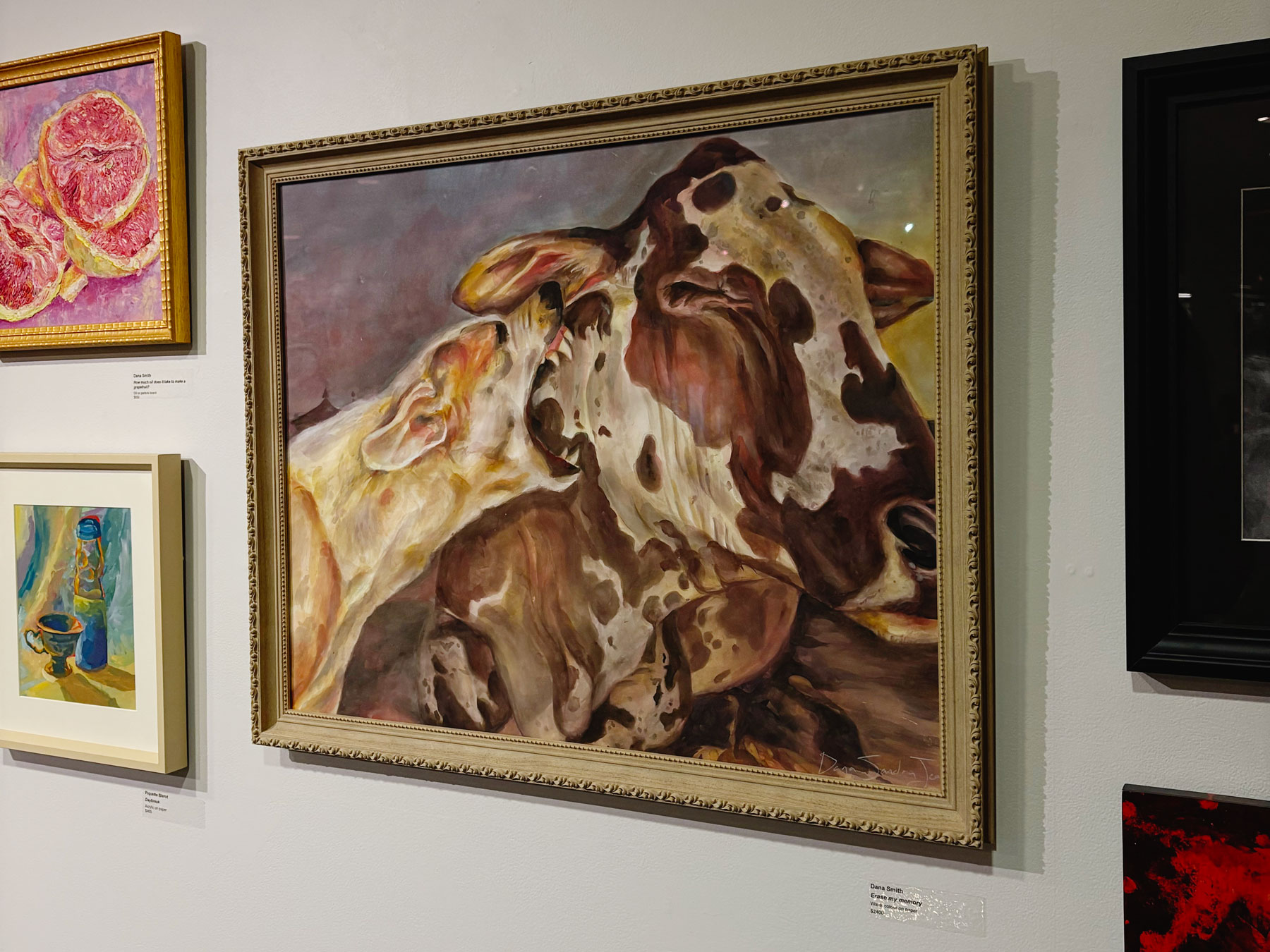When you walk into the Community Gallery at the Art Gallery of Alberta, food comes at you from all angles. The exhibition deleTABLE: The Future and Fragility of Food, now on display, might make you think differently next time you open your refrigerator.
Brought together by Portage College’s Pierre Öberg, with the support of University of Alberta’s Royden Mills and University of HDK-Valand’s Karl-Johan Skogh, the show explores the complex relationship we have with food. Students and staff from each of the participating universities contributed work. “Each has a very unique view of the world and particular process behind the materials, meaning and community,” Mills shares.
The exhibit was born of Öberg’s need to dissect food culture, from abundance to scarcity, luxury to mundanity, health to sickness, tasty to inedible, slow to fast. He has always had a foot in rural existence, growing up on an Alberta farm Southeast of Camrose.
But the exhibition is also a window to our past, present and future, says Skogh, who believes humanity’s most intimate moments can be defined by our interaction with what we consume.
This idea is brought to life in works like But mine don’t look like yours, an acrylic painting by Angelina Flores, who shares a scene of her mother, sister and nephew’s hands preparing pupusas, a traditional dish from El Salvador. The work reflects the feeling of growing up surrounded by culture but not being as skilled in a craft that is meant to be part of your blood. Despite the distance felt in this piece, the artist still savours the act of passing on tradition.
Another work, by painter Dana Smith, captures a cow fearfully shuddering as a dog aggressively growls in her ear. The watercolour, titled Erase my memory, subtly addresses the meat industry and the fear inflicted on the animals groomed for slaughter.
Maria Shironoshita’s work, Our Mother’s Magazines, speaks to the impact food has on body image. An oil on birch panel of women posing on top of foods common to ’50s era women’s magazines — think rose-coloured Jell-O moulds — represents the complicated relationship they have toward food, mirroring the damage advertising has had on body positivity and inclusivity. Shironoshita says that her work “examines the depiction of food and women in print media and their insane effects on our moms, and by extension us.”
